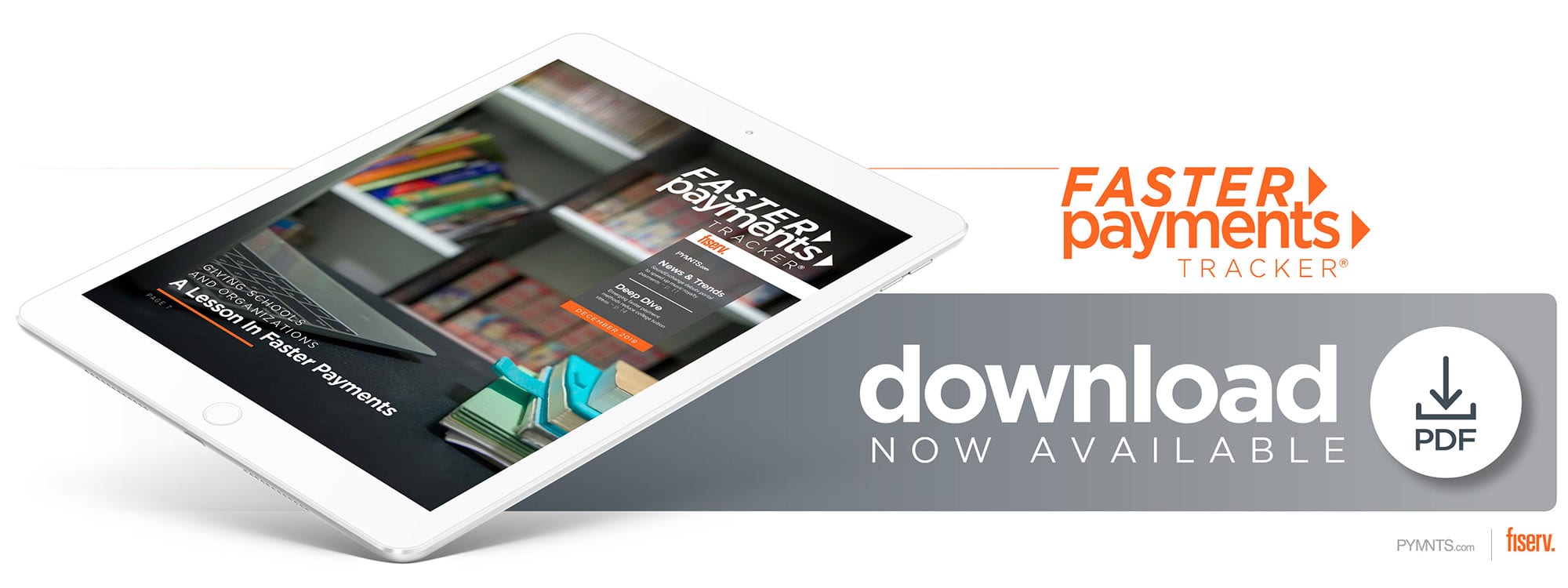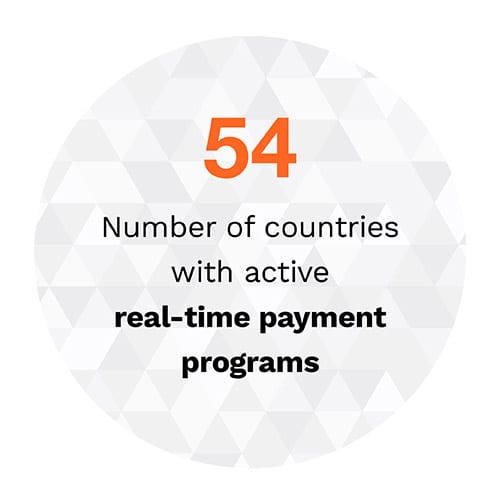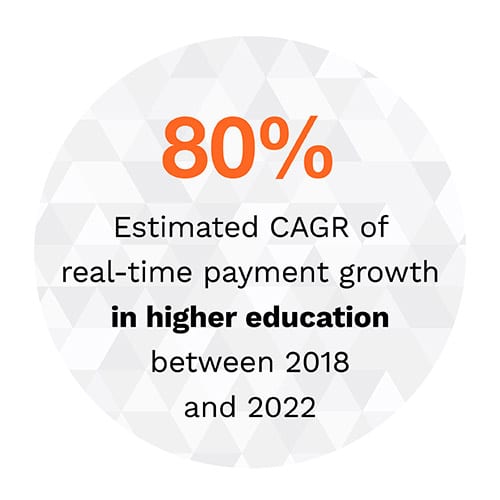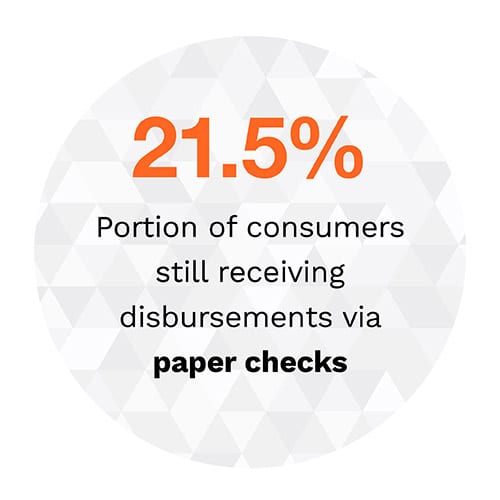A Faster Payments Fix For School Invoice Woes

 Despite the demonstrated benefits, the adoption of real-time payments has not been, well, particularly speedy. Many businesses cite the lack of ubiquity and high upfront costs for their halting shift to digital payment solutions. Still, the need for speed, convenience and safety is universal and the roll out of real-time payments in the U.S. and abroad continues at a steady pace. Fifty-four countries now have active real-time payment programs, up from 40 countries in 2018.
Despite the demonstrated benefits, the adoption of real-time payments has not been, well, particularly speedy. Many businesses cite the lack of ubiquity and high upfront costs for their halting shift to digital payment solutions. Still, the need for speed, convenience and safety is universal and the roll out of real-time payments in the U.S. and abroad continues at a steady pace. Fifty-four countries now have active real-time payment programs, up from 40 countries in 2018.
 The higher education and public school system is one such space that remains mired in outdated, slow paper-based payment processing methods. The December Faster Payments Tracker explores the opportunities that smart FinTechs are taking in the education space and looks at the expanding cross-border tuition market and the challenges students and parents face sending tuition payments both domestically and internationally.
The higher education and public school system is one such space that remains mired in outdated, slow paper-based payment processing methods. The December Faster Payments Tracker explores the opportunities that smart FinTechs are taking in the education space and looks at the expanding cross-border tuition market and the challenges students and parents face sending tuition payments both domestically and internationally.
Across The Real-Time Payment Space
The drive to adopt real-time payments in the U.S. is due in large part to the efforts of the U.S. Faster Payments Council (FPC). In recent months, the council has expanded its membership roster to include heavyweights such as the Federal Reserve and electronic payments and banking solution provider ACI Worldwide, boosting the council’s mission of developing a national faster payment system.
Real-time payments technology continues to bring speedier payments to new markets such as the music business, and artists — and their accountants — dig the new sound. Musicians can now solve ownership disputes quicker and get paid faster with SoundExchange Direct‘s new client portal. The Overlaps and Disputes tool notifies rights owners immediately when other parties make competing claims to their work.
 Heavily regulated industries bedevil firms with their multitude of compliance requirements. Mastercard has identified the alcohol distribution space, with its complex distribution network and supply chains, as ripe for a more streamlined payment processing solution. The financial giant recently partnered with PNC Bank to unveil an instant payment system called Payments on Delivery, which allows these businesses to pay their suppliers in real time — cementing their relationships and improving operational efficiency.
Heavily regulated industries bedevil firms with their multitude of compliance requirements. Mastercard has identified the alcohol distribution space, with its complex distribution network and supply chains, as ripe for a more streamlined payment processing solution. The financial giant recently partnered with PNC Bank to unveil an instant payment system called Payments on Delivery, which allows these businesses to pay their suppliers in real time — cementing their relationships and improving operational efficiency.
Find more real-time expansion efforts by FinTechs in the News and Trends section.
Bursari Helps Public Schools Adopt Faster Payments
The education space is also in need of innovative payment processes. Parents are often plagued with cumbersome cash or check payment methods when they need to pay invoices to their child’s school. Educators deposit the checks in the schools’ bank accounts and then have to wait as many as 21 days for the money to become available. In the Tracker’s Feature Story, CEO Jerry Banks of Bursari explains how the firm’s transaction processing platform, which targets K-12 public schools and community organizations, allows  schools to create digital invoices and text notifications to parents for bill payments.
schools to create digital invoices and text notifications to parents for bill payments.
Real-Time Payments Make The Grade in Higher Education
For higher education, the payments process is not much speedier. Automated clearing house (ACH) transactions and credit cards are currently the main methods parents and students use to make tuition payments. But families — and schools — are clamoring for faster, safer and more convenient ways to pay and process tuition payments. The Tracker’s Deep Dive explores how real-time payments, among other benefits, allow parents to pay tuition in real time, on-time and with no processing fees.
About the Tracker
The Faster Payments Tracker™, powered by Fiserv, is your go-to resource for staying up to date on faster payments developments and initiatives on a month-by-month basis. The Tracker highlights the contribution of different stakeholders, including institutions and technology providers coming together to make this happen.